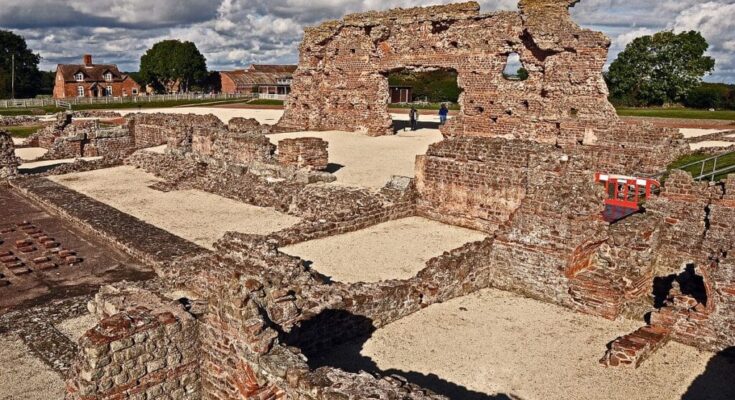A stunning Roman mosaic was discovered recently in England, making archaeologists and enthusiasts ecstatic about this latest find.
The fascinating uncovering of this remarkable Roman mosaic took place at the English Heritage site of Wroxeter, in the county of Shropshire, England.
The mosaic dates back to the second century AD. The reason it was so well preserved was because it was covered with debris. This had probably happened because the Romans wanted to build a structure above and around it. This happened approximately two centuries after the creation of the mosaic, scientists believe.
According to Vianova Archaeology, which took part in the excavation, the investigation involved ”an unexplored part of the site where the Roman-period remains lie almost completely undisturbed below the ground.”
Roman mosaic discovered in England during routine works
The stunning artwork was discovered during a routine excavation at the Wroxeter Roman city.
Wroxeter was an important urban centre and the fourth-largest city of Roman Britain. The city was known as Viroconium Cornoviorum during Roman times and had an estimated population of some 15,000 people.
This is the first Roman mosaic to be discovered in the broader area in more than 160 years.
From what the archaeologists have found, the mosaic was decorated with an aquatic scene with stylised dolphins and different kinds of fish.
Vianova Archaeology noted that the building was ”probably owned by a wealthy and powerful family.”
The excavation was directed by Dr Peter Guest from Vianova Archaeology, Dr Roger White from the University of Birmingham and Mike Luke from Albion Archaeology.
The mosaic as part of a broader settlement
According to the press release of Vianova Archaeology, this structure was “a shrine or mausoleum.” Experts believe that this was ”a small square stone-built structure with a central chamber.”
Based on the discoveries made so far, experts believe that the structure was actually tall, extending several storeys high.
They also believe that its external walls ”were covered with painted plaster, some of which was still in place, which means it would have been seen from miles around.”
If this structure was indeed a mausoleum, ”its chamber must have held the remains of an important individual in Wroxeter’s earliest history; possibly someone associated with the earlier legionary fortress or perhaps a founding father of the new city,” Vianova Archaeology’s press release stated.
A total of thirty archaeologists worked hard at the archaeological site of Wroxeter. They conducted their work for more than a month in July and August.
Along with them, they had a total of twenty student archaeologists and volunteers who learnt a lot about the broader area’s history and the Roman roots of the community.
Additionally, according to Vianova Archaeology, more than 1000 people visited the excavation on guided tours to see what the archaeologists were doing and what they had found.



